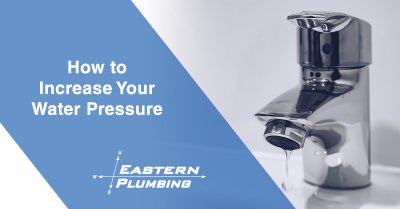Starting or ending the day with a weak shower isn’t satisfying for anyone. When you start to notice that your water pressure is low, it usually doesn’t rank high on your priorities. If you are a homeowner, you probably have other around-the-house fixes that seem more important, and you just learn to live with low water pressure. But you shouldn’t have to tolerate the trickle. Here are a few things to try to see if it is an easy fix or if it’s time to call a plumber.
Ask Your Neighbors
If you live in a neighborhood, ask around to see if others are having the same problem. If so, the issue could be the city’s water system. Just like the pipes in your home, these systems are also subject to leaks, clogs, buildup, and corrosion.
Clear the Clogs
Overtime, fixtures, valves, and pipes can develop a buildup of mineral deposits. In extreme cases, this buildup can prevent water from freely flowing through. This will leave you with a pitiful drip when you turn on the shower or sink. While some extreme cases can require a professional’s help; you can take care of clogs at your system’s exit points by dissolving any minerals that are gumming up the works inside your faucet fixtures and shower heads.
Place an open zip-lock bag filled with vinegar over your shower head or faucet, tie it in place with some string, and leave it overnight to soak. Rinse off your cleaned fittings the next morning. If this trick doesn’t work and you believe you have a more severe mineral clog inside the pipes, call Eastern Plumbing and we’ll take a look.
Piping
Corroded pipes are a common cause of low water pressure. If you live in an older house with galvanized iron pipes, they could have accumulated corrosion inside over the years. The accumulated corrosion eventually restricts the water flow. Other common piping issues that cause water pressure issues are debris and kinks in piping as well as improperly sized piping.
Check the Valve
Your home has a main water valve, usually located near the meter, which controls the flow of water into your home’s pipes. Locate the valve and check to see if it is completely open. Sometimes the valve gets accidentally turned during routine repairs and maintenance. If, for example, your drop in pressure coincides with recent work you have had done on your home, your contractor may have turned off the main water supply and at the end of the job only partially reopened the valve. This resulted in restricted flow and reduced pressure. Fortunately, the valve is easy for you to adjust yourself!
Look Out for Leaks
Damaged pipes may result in leaking water as it travels through your pipes, leaving you with just a trickle at the tap. To determine if your main pipe has any damage, make sure all faucets indoors and outdoors are turned off, then turn off the water valve in your home and write down the number that appears on your water meter. Return in two hours and take the meter reading again. An increased reading is a sign of a leak—and a sign that it is time to give us a call.
If you discover any concerns or want a professional to take a look at why your home’s water pressure is not up to par, contact Eastern Plumbing today!






